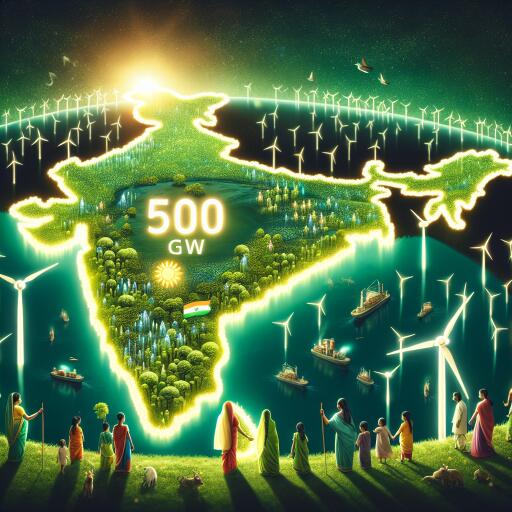
India well-positioned to achieve 500 GW of renewable energy by 2030
India’s journey towards a sustainable future looks promising as it strides closer to its ambitious goal of integrating 500 GW of non-fossil fuel installed capacity by the year 2030. A surge in renewable energy capacity additions underlines this progress, with the nation well on its way to allocating 50 GW of renewables yearly.
As of mid-year, India’s renewable capacity soared to 148 GW, complemented by a robust development pipeline of an additional 140 GW in various stages of realization. The renewable energy landscape in India experienced substantial growth in the early months of 2024. Notable was the announcement of around 70 GW of tenders and the awarding of 38 GW of projects to the leading contenders. This expansion was largely driven by competitive bidding processes for renewables and energy storage projects, underscoring the nation’s commitment to transitioning to sustainable energy sources.
The competitive tender system initiated a record-breaking allocation of 26 GW in renewable projects during the first three months alone. The momentum slightly normalized in the following quarter, with about 7 GW of capacity awarded. This period also witnessed a doubling in new renewable capacity requests through competitive tenders compared to the same timeframe last year, signaling strong demand for renewable energy within India.
Leading the charge in requesting capacity were federal agencies such as the Solar Energy Corporation of India (SECI), NTPC Ltd, SJVN Ltd., and NHPC Ltd., which constituted roughly half of the total tendered capacity. These agencies were responsible for awarding about three-fourths of the 7 GW of renewable projects in the second quarter, leaving the remainder to be managed by state-level entities.
By the close of the second quarter, approximately 60 GW of green energy tenders were open for bidding, highlighting an enthusiasm for clean energy expansions. This includes 20 GW of newly requested capacity and 40 GW carried over from past quarters. The tender mix showcased a diverse range of projects with solar PV projects taking half of the bids, followed by 18% for hybrid renewables, and 9% for onshore wind projects, respectively.
Standalone energy storage projects accounted for about 6% of the open tenders, although the completion of tender processes can stretch up to six months or more due to administrative or technical challenges.
Competition within India’s renewables market is fierce, with over 30 companies being awarded projects in the second quarter alone. Leading the pack, companies like Avaada Energy, JSW Energy Ltd., ReNew Energy Global PLC, Juniper Green Energy Pvt. Ltd., and Ampin Energy captured the lion’s share of the awarded capacity, showcasing the vibrant entrepreneurial ecosystem propelling India’s energy transition.
Interestingly, less than 5% of the awarded capacity for this period went to international entities, emphasizing a strong domestic response to renewable energy tenders. The pricing dynamics also revealed interesting trends, with the average solar tariff for second-quarter projects sitting at approximately USD 33/MWh. This represents a 2% increase over the previous quarter but a 6% decrease on a yearly basis. Conversely, hybrid wind-solar tariffs noted a year-on-year increase of about 13%, despite a quarterly decline. Encouragingly, the tariff for standalone energy storage witnessed a significant 20% reduction, indicating a downward trend in costs.
India’s strategy for scaling up renewable energy tendering activities is a testament to its accelerated pace towards achieving its energy transition goals. Having historically awarded an average of 16 GW of renewable projects annually from 2020 to 2023, the nation is on a clear path to exceed its annual target of 50 GW in renewable capacity awards for 2024.
This momentum not only highlights the country’s commitment to a sustainable future but also positions it as a global leader in the renewable energy sector, showing the world the feasibility and necessity of moving towards cleaner, more sustainable energy solutions.





Leave a Reply